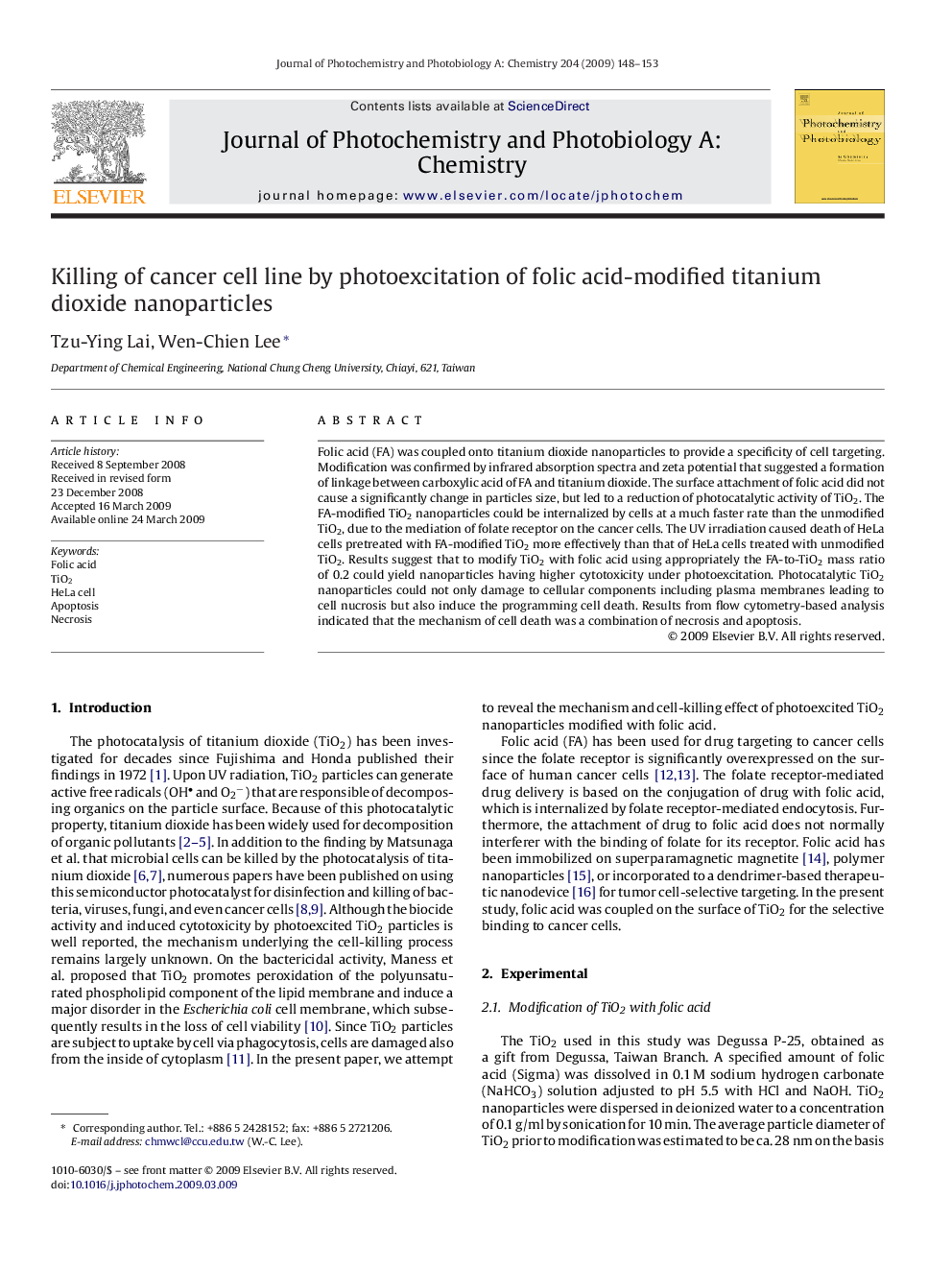| Article ID | Journal | Published Year | Pages | File Type |
|---|---|---|---|---|
| 27443 | Journal of Photochemistry and Photobiology A: Chemistry | 2009 | 6 Pages |
Folic acid (FA) was coupled onto titanium dioxide nanoparticles to provide a specificity of cell targeting. Modification was confirmed by infrared absorption spectra and zeta potential that suggested a formation of linkage between carboxylic acid of FA and titanium dioxide. The surface attachment of folic acid did not cause a significantly change in particles size, but led to a reduction of photocatalytic activity of TiO2. The FA-modified TiO2 nanoparticles could be internalized by cells at a much faster rate than the unmodified TiO2, due to the mediation of folate receptor on the cancer cells. The UV irradiation caused death of HeLa cells pretreated with FA-modified TiO2 more effectively than that of HeLa cells treated with unmodified TiO2. Results suggest that to modify TiO2 with folic acid using appropriately the FA-to-TiO2 mass ratio of 0.2 could yield nanoparticles having higher cytotoxicity under photoexcitation. Photocatalytic TiO2 nanoparticles could not only damage to cellular components including plasma membranes leading to cell nucrosis but also induce the programming cell death. Results from flow cytometry-based analysis indicated that the mechanism of cell death was a combination of necrosis and apoptosis.
